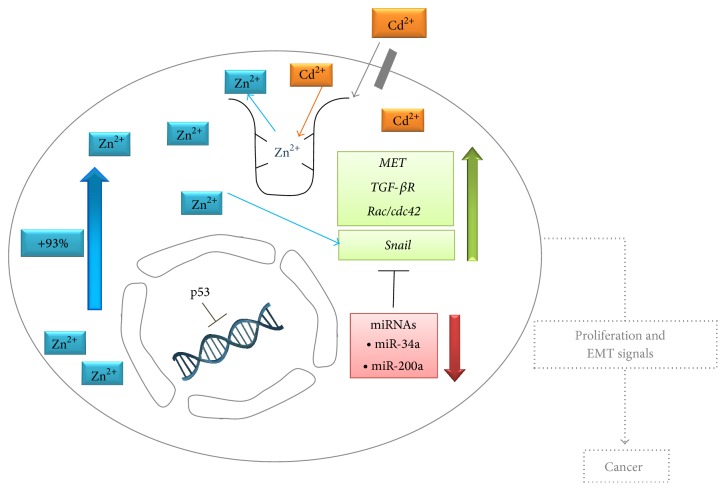Figure 5.
Overview of cellular and molecular effects of 10 μM Cd in HepG2 cells. Cd enters the cells through aspecific sites. Intracellular Cd accumulation determines an increase of labile zinc, a known proliferation signal, and second messenger. The replacement of Zn with Cd in the zinc proteome [18] is the hypothetical process underlying the above described mechanism. Genes (Snail, MET, TGF-βR, and Rac/cdc42) involved in the loss of cell adherence and also comprised in the mechanism of epithelial-mesenchymal transition are disregulated. MicroRNAs (miR-34a, miR-200a) with tumor-suppressor functions are downregulated. Cd-exposed HepG2 cells have a nonfunctional p53 [19] that along with miR-34 downregulation represents the disregulated axis in Snail1-dependent epithelial-mesenchymal transition [20].

